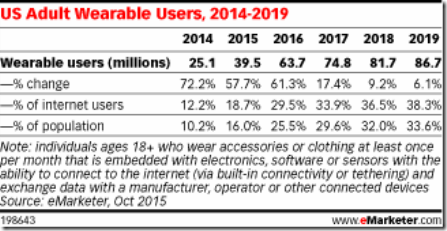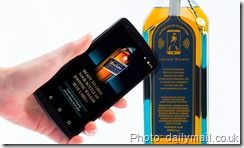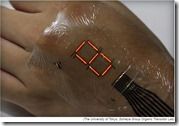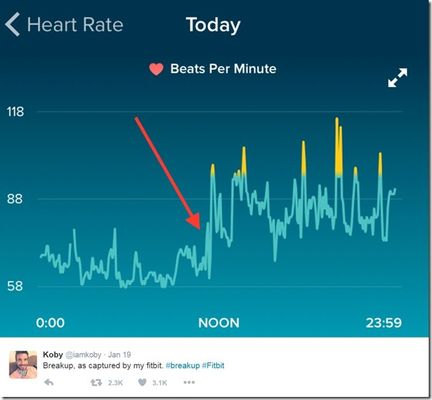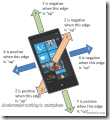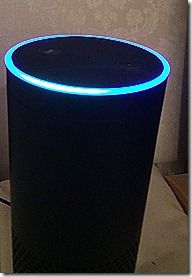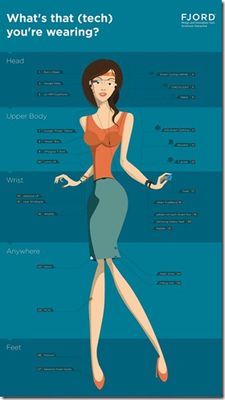wearables
20 TopicsConnecting the Threads
What was first used to protect humans from the outside elements is now monitoring our body's inside environment. According to eMarketer.com, wearable usage will grow almost 60% in 2015 verses 2014. This year, almost 40 million U.S. adults will use wearables, including smartwatches and fitness trackers. And that's only 16% of the penetrable market. They expect that number double in two years with close to 82 million adults wearing something connected by 2018. Almost two in five internet users by 2019. You probably think that it'll be all those youngsters growing up with connected objects but over the next four years, older Americans will see the biggest growth with the flood of wearable health monitor devices. Don't fret, I'm sure that new outfit for special occasions will monitor something. These connected wearables will soon be able to cover our body. Even with that growth, adults are still exploring the value of wearables, above the wow-cool factor, for the real benefit of the investment. With prices still high for many of these gadgets, the adoption will be slightly lower than the recent mad rush for smartphones and tablets. Yet like many new technologies, as sticker-shock drops, the adoption grows. In addition, as more apps are developed to work with this new wardrobe, more people are likely to use it...just like the mobile device market. After all, that's what these things are - mobile devices. And once that happens, the advertisers will be all over that segment, which is currently very sparse. And what typically follows mass adoption of technology? Vulnerabilities and security risks. More connected personal devices in the office means more enterprise security risks. Whether it be from smartwatches having access to sensitive corporate data or the lost bandwidth from all the updates and alerts sent to these devices. Corporate BYOD security policies could soon include smartwatch use or any other wearable that poses a risk to the organization. As Steven Wright says, 'Right now I'm having amnesia and déjà vu at the same time.' BYO2.0 And we haven't even touched on the lack of security being built into some of these devices. From insulin pumps, to glucose meters to pacemakers, anything that is wireless enabled is vulnerable to attack. While the bad guys are always looking for an easy score, it could also be the disgruntled employee looking to fix someone's wagon. And when I say fix, I really mean break. There are also privacy concerns for those who might be wearing smart eyewear. That casual, always awkward conversation at the urinal now takes on new meaning. For highly sensitive meetings, there could be a clothes rack and changing station so someone doesn't need to strip down just to participate. Forget about spy pens with wireless mics, my shirt's logo has a camera weaved into the seam. All is not lost though, as there will be plenty of top 10 lists guiding you so you do not become a social (real world) outcast. WT VOX has put together it's Top 10 Worst Wearable Tech Devices So Far list. From a tie that has a QR code built into its back, to smartwigs, selfie-hats and drum pants, they explore the wild gadgets that are clamoring to cover our body. And on the flip side, they also look at the 10 Wearables and IoT Companies To Watch In 2015. Here, you get a glimpse of the future of smart lighting, dealing with big data, new IoT chipsets, IoT cloud platforms and other entities focused on our networked society. Hashtag: Amazing. ps Related: Wearable Usage Will Grow by Nearly 60% This Year The Dark Side of Wearable Tech Use Top 10 Worst Wearable Tech Devices So Far 10 Wearables and IoT Companies To Watch In 2015 Wearables Head to Tail Oh, Is That The Internet You're Wearing? The Digital Dress Code IoT Influence on Society Technorati Tags: wearables,iot,things,connected devices,security,privacy,silva Connect with Peter: Connect with F5:394Views0likes1CommentThe Visible Data of the Invisible User
As the march to connect each and every noun on this planet continues with a blistering pace, the various ways, contraptions and sensors used to collect data is greatly expanding. What once was a (relatively) small collection of fitness trackers, smartwatches, thermostats, automobiles and surveillance cameras has grown into a an industry where shirts, shoes, sleeping bags and even liquor bottles want to gather your info. And most of these devices monitor silently without you even knowing. According to Ryan Matthew Pierson over at Readwrite.com, ‘The strength of IoT is in its ability to be invisible to the user.’ In addition, the mad dash to simply insert a chip, beacon and software into everyday objects is slowly graduating to era where user experience, privacy and security are becoming critically important for mass adoption. In 2014 Gartner released a report saying the typical family home could have as many as 500 smart devices by 2022. The Consumer Technology Association (CTA) notes that 20% of US households now own an activity tracking wearable device, two-times the households that owned one last year. And Nielsen reported that smartphone penetration has reached 82% in the U.S. Interacting and engaging with the customer in real time is a desire of many organizations. From media and entertainment, to appliances, to transport technologies, to security and environmental controls, along with healthcare and fitness equipment almost every ‘thing’ around us will track something. Or as Dr. Nick Riviera sings, ‘The knee bone's connected to the something. The something's connected to the red thing. The red thing's connected to my wrist watch... Uh oh.’ And it is not only consumer items. The Industrial IoT is helping farmers with connected tractors, soil sensors, crop health apps and the like. There are HVAC systems that are managed by sensors; Streetlights, utilities, parking and traffic in a connected city; and even sports teams are using wearable tech to gain a competitive advantage. And according to Research and Markets, wearable tech in schools is set to surge over the next 5 years. With the IoT growth comes threats, along with resources to reduce the risks. In Gartner’s latest forecast, IoT security spending is set to nearly double between 2014 and 2018, growing from about $232 million to almost $550 million. Nearly $350 million will go into securing IoT this year alone. They also predict that there will be 6.4 billion connected devices in use worldwide this year, up 30% from 2015. The security investment is good news since according to Spiceworks and Cox Business, the flood of IT devices entering the market does create security and privacy issues in the workplace. 84% of their survey-takers named the growing number of entry points into the network as a major concern. Number two on the list, at 70% of respondents, was insufficient security measures on the part of IoT manufacturers. But soon we might be able to solve some of the challenges with our Brain. There are some very smart research brains out there that have come up with a way to identify you by your brain waves with 100% accuracy. This is your Brainprint. A team of researchers at Binghamton University, recorded the brain activity of 50 people wearing an electroencephalogram headset while they looked at a series of 500 images. The pictures were designed specifically to elicit unique responses from person to person. Images included things like pizza, a boat, certain words, celebrities and so forth. They found that participants' brains reacted differently to each image, enough that a computer system was able to identify each volunteer's ‘brainprint’ with 100% accuracy. According to researchers, brain biometrics are appealing because they are cancellable and cannot be stolen by malicious means like a fingerprint or retina scan. The results indicate that brainwaves could be used by security systems to verify a person's identity. This could be key since our personal data and pattern of life seems to be more valuable now than a silly, worthless credit card number. Brain & Invisibility: Activate! << signed 'ps' in Invisible Ink Related: Wearable sleeping bag liner brings the heat at camp Researchers can identify you by your brain waves with 100 percent accuracy IoT Security Spending to Skyrocket Widespread IoT adoption requires good user experience The wearable tech giving sports teams winning ways Over 10 billion shirts and shoes will soon talk back to you via your phone School wearables to surge over next five years370Views0likes0CommentsYou’re Getting Under My (e)-Skin
Imagine if the temporary tattoos that come in a box of Cracker Jack (if you’re lucky) had an electronic display logo that lights up when you put it on. Or a fitness tracker that you tape to yourself rather than wearing it around your wrist. Or a watch so thin that it lights the time while blending into your skin. Or even, a sensor that can be applied directly to an organ to determine health. This is the future for electronic skin. Yup, I said it: E-Skin. Researchers in Japan have developed an ultra-thin and ultra-stretchy material that can mimic the flexibility of human skin. Ultraflexible organic photonic skin is an organic polymer with light-emitting diodes (PLEDs) or small sheets of energy-efficient lights that are laminated right on the skin. These are intended to equip the human body with electronic components for health-monitoring and information technologies. These are transparent but when powered with electrical pulses, it’ll emit a colored light, number or letter depending on the implementation. The arrangement of PLEDs can also display more complex information. They also report that this PLED film produced less heat and consumed less power than previous e-skin samples. The interesting thing here is that they used organic materials, added an extra layer of film to protect it from oxygen and water, so it lasted several days. Past organic efforts lasted less than a day due to air exposure. Today, non-organic materials used to make super-thin tattoo-like monitoring devices can last weeks or longer. These advancements will only fuel the health care wearable market which is growing exponentially. Research firm Tractica released findings from its report ‘Wearable Devices for Healthcare Markets’ that show worldwide shipments of healthcare wearables will increase from 2.5 million in 2016 to 97.6 million in 2021…or $17.8 Billion in yearly revenue. The general wearable device market will increase from 85 million units in 2015 to 559.6 million units by 2021 - a compound annual growth rate of about 37%. If you thought the influx of data center and cloud traffic from mobile was big, just wait until all our body vitals start hitting the wire. Add that to all the other IoT initiates, like home/automotive, big data suddenly turns into ginormous data. While we may instantly think about the fitness trackers and smartwatches that garner our bodies, the health care industry is also looking at the treatment of chronic diseases, wellness programs, remote patient monitoring and physician use. And there are other devices like posture monitors, connected wearable patches and pain management wearables that are gaining ground. I can already hear the posture sensor barking, 'Stop Slouching!' and a pain patch that actually works instead of those menthol smelling globs – great idea! ps Related Super-thin electronic skin lights up a digital display on your hand Ultraflexible organic photonic skin Healthcare wearables will bring $17.8B in yearly revenue by 2021, says Tractica Wearable Devices for Healthcare Markets310Views0likes0CommentsWearing Emotions on Your Sleeve...Literally
Imagine if your emotions and feelings could be measured, tracked and included in a data graph. I'm sure you've heard the saying 'wearing your heart on your sleeve' to indicate that someone expresses their emotions freely or exposes their true emotions without caution. This can be good in that you become open and vulnerable when showing your true feelings but can jade areas like composure in situations where you might be frustrated or irritated. I tend to be fairly open with my emotions. There are a few stories about the origin of the saying going back to the Middle Ages. Emperor Claudius II felt unattached men make better warriors so he outlawed marriage. To alleviate some of the grievances, every year during the Roman festival honoring Juno, he'd allow temporary coupling where men drew names to determine who would be their lady friend for the year. The man would wear her name on his sleeve for the festival. Around the same time, when knights performed jousting matches, they'd dedicate their match to a lovely lady of the court. By wearing her hanky around his arm, he was signaling that he was defending her honor. And in Shakespeare's Othello, Iago confesses, For when my outward action doth demonstrate The native act and figure of my heart In complement extern, ’tis not long after But I will wear my heart upon my sleeve For daws to peck at. I am not what I am. – Othello, Act 1, Scene 1, 61–65 Whatever the origin, humans are emotional creatures. We typically make choices based on emotion, even though we'd like to think it was a rational decision. We may try to hide our emotions as to not upset or reveal something to another person. Often called a Poker Face. But imagine if your emotions and feelings could be measured, tracked and included in a data graph. Other than a polygraph. Daydream no more. There are now wearables that track your emotions. This is not your father's old-skool mood ring but devices that read your current emotional state and attempts to sooth and lower stress levels by encouraging deep breaths and relaxation techniques to get you through the haze. Sensors that gather skin temperature, sweat gland activity and blood pulse along with movement gauge your activity level. From that, it generates a graph on your mobile phone so you can see when your stress levels peaked and the mood at the time. You can see real time or over the course of the day. Emotional analysis in your pocket...or sleeve if you got one of those runner's arm band things. I'm sure someone will create a shirt that has color changing sleeve threads depending on a person's emotional state. The Iagonaut. This is not the future but today. A Fitbit captured the moment of a broken heart during a relationship ending phone call. This man was wearing his Fitbit when the unexpected call came and his daily graph tells the whole story: Koby (@iamkoby) shared his heart wrenching moment (and graph) on Twitter and it saturated the internet. The red arrow indicates the moment that the news hit him. Instantly, his heart rate jumped from 72 to 88 beats per minute and stayed high for the rest of the day. Clearly this healthy, athletic person was under duress and if you couldn't tell by the yellow peak marks, he had trouble sleeping that night. Talk about exposing your emotions with technology. Would you share your sleeve with the world? ps Related: Fitbit captures exact moment man's heart breaks The Origins of Wearing Your Heart on Your Sleeve Forget fitness, this wearable tracks your emotions Connecting the Threads The Digital Dress Code Wearables Head to Tail Gartner Says Worldwide Wearable Devices Sales to Grow 18.4 Percent in 2016 Technorati Tags: iot,wearables,emotions,humans,stress,sensors,silva,f5 Connect with Peter: Connect with F5:1.4KViews0likes0CommentsMeet the Sensors
I often write about the Internet of Things, or the soon-to-be-cliché IoT. You know, the smart-fridges, smart-cars, smart-thermostats, healthcare devices, wearables and any of those connected devices that have a sensor, gathers data and reports back to some entity. You are able to control these devices (and see the data) with mobile apps or even your own voice and gestures. They are all the rage and sitting at the top of the Gartner Hype Cycle. But it’s all the various sensors inside those devices that are doing the actual measuring, calculating, tracking and reporting. Each has its own specialty providing specific functionality. I’ve always wondered about what’s inside some of the wearables let’s take a look at a few. Have you ever wondered what spins the screen so you’re not looking at an upside down picture? That’s an Accelerometer. It measures orientation and movement. The iPhone was the first to use this back in 2007 and amazement ensued. It can tell the difference between running away from a charging buffalo in Yellowstone verses making faces with a chimp at the zoo. It can also tell if you’re sleeping simply by the fact that you haven’t moved for a while. These are typically used to track step count and how well you’ve rested. I noted that the accelerometer measures step count but what about those steps up a flight of stairs? Well, that would be the Altimeter. Altimeters measure altitude so it can sense changes in height. In conjunction with the steps the accelerometer counted, the altimeter will add its bits and give you a more accurate calorie count for those fire escape runs. Instead of asking how tall someone is, next time ask ‘What’s your alti?’ And if you’re going to step out for a run, you might want to know if it’ll be sunny or sprinkles during the trek. Often seen as a smaller dial on an outdoor clock but now on wristbands, a Barometer measures atmospheric pressure – the weight of air in the Earth’s atmosphere. It’s used in forecasting the weather and you often hear meteorologists note, ‘There’s a high ridge of atmospheric pressure keeping the rain away.’ At least that’s what they’ve been saying in California about the drought. So you thought of attempting an Iron Man competition but wondered if your device could differentiate between the swimming, biking and running. You’re in luck if your device has a Gyroscope. Using the Earth’s gravity, it can help determine orientation. The big difference between an accelerometer and a gyroscope is that a gyroscope can also measure rotation or more specifically, the rate of rotation around a particular axis. Gyroscopes take into account the Earth’s gravity and rotation while the accelerometer does not. If tracking stars for navigation and location like the early Polynesians is not your style, then the ever popular GPS is your tool. Using three satellites to ‘triangulate’ your location, the receiver measures distance to the first satellite. Based on that, you are in a certain sphere location on the planet. It then measures the distance to the second satellite to get another sphere location. Therefore, you must be somewhere on the circle where these two spheres intersect. By using a third satellite reading, the sphere that cuts through the circle of the intersection of the first two spheres narrows your location even more. Now our position is narrowed to two points in space. One of those two points is so absurd and instantly tossed, thus leaving you with an exact location. There are a bunch of other sensors like Optical Heart Rate Monitors, typically worn on the wrist and it shines a tiny light against your skin to measure the blood pumping through your arm veins. And the various Gesture Tech things that use a little camera to see your hand and body movements to translate that into action on a gaming device, or a drone following your Snake River Canyon jump or even turning up the volume on the TV. It’d be cool to move something out of the way by effortlessly swiping your hand in the air, huh? Sensors have been all around us for a while but now they are becoming close confidants. We should get to know our new Ohana. ps Related What do the sensors in wearable tech actually do? The World's First Urine-Powered Wearable Is Here Accelerometer vs. Gyroscope: What's the Difference? Wearables Head to Tail Oh, Is That The Internet You're Wearing? Connecting the Threads Our Five Senses on Sensors Sensors and IoT Technorati Tags: iot,wearables,sensors,humans,silva,f5,mobile Connect with Peter: Connect with F5:344Views0likes0CommentsYou Are the Device in 2016
… and the controller and data generator. Were you surprised with that new car in your driveway sporting a huge bow this holiday season? Yea, me neither. But we did get a new gaming console that doesn’t require you to hold a controller in your hand. You know The One. It has a camera that picks up your body movements and turns that into action on your screen. It’ll even scan your face and create a digitized, animated You right in front of your eyes. You can then choose your You to play games. Now I realize some of you have had these for several years but we’ve been stuck in 2010 at our house…at least with gaming consoles. For 2016, You are now the device, controller and data generator. The Consumer Electronics Show (CES) is this week and plenty of new gadgets are being unveiled to interact with our lives. Starting at the bottom, smart shoes might be the next big thing to hit stores this year. According to the manufacturer, you’ll be able to control the temperature of the shoe with a mobile app and it’ll count your steps more accurately than the thing you wear on your wrist or carry in your pocket. The temperature control idea is interesting since one of the ways to stay comfortable in the summer heat is to keep your feet cool. There’s also self-lacing shoes on display. A fitness company also unboxed smart footwear that tracks time and date, duration, distance and splits, without a runner having to carry other devices. As we move up the body, a smart belt called Belty is grabbing people’s attention. Like any other belt, it fits through your pant loops but the motorized insides will adjust loose when sitting and tighten up when you stand. You can also have it vibrate to remind you to stand every so often if you’re on your bottom too long. It keeps track, via a smartphone app, not only of your steps but also your expanding or diminishing waistline over time. Will it shame you come next Thanksgiving? Maybe not, but the sounds and sights of a roomful people unhinging their pants after a big meal might become an era gone by. There are also new fitness trackers, smart shirts, smartwatches, gesture controlled cars, grocery shopping fridges, and even a digital laser hair treatment that you put on your scalp for 90 seconds every night and the company claims that it’ll restore thinning hair. Home hubs will be built into smart televisions and fridge cams will allow you to see if the light really goes out when you close the door. Sensors in our society have become commonplace and while in the past they’ve been used to track weather, traffic conditions and how much we weigh, they are now attached to our bodies gathering information about us and reporting back. Forget about BYOD, we’re back to the old, ever popular BYOB – Bring Your Own Body. ps Related: Wearables Head to Tail Oh, Is That The Internet You're Wearing? The Digital Dress Code Connecting the Threads IoT Influence on Society Our Five Senses on Sensors Hacking the Internet of Things looms over CES Technorati Tags: f5,iot,things,ces,sensors,wearables,silva Connect with Peter: Connect with F5:368Views0likes0CommentsThe Top 10, Top 10 Predictions for 2016
The time of year when crystal balls get a viewing and many pundits put out their annual predictions for the coming year. Rather than thinking up my own, I figured I’d regurgitate what many others are expecting to happen. 7 Future Predictions for the Internet of Things – IoT is one of the hottest terms and trends. From connected cars, homes, businesses and more, connected devices are becoming more prevalent in our lives. Stable Kernel looks at the future economic growth, development of smart cities, wearables, privacy challenges and how voice commands will become the norm. Top 10 Humanoid Robots Designed To Match Human Capabilities And Emotions – While once a dream of The Jetsons, companion robots in the home will become as common as pets, even if the pet is a robot. WT VOX explores whether robots could fully replace humans by 2045 as some predict and takes a look at the top 10 that are starting to match human capability. The top security threats of 2016 – ZDNet digs into McAfee's 2016 cybersecurity threat report covering areas like hardware, ransomware, cloud services, connected cars and the warehouses of stolen data. From the Ashley Madison hack, to Jeeps taken off-road and the TalkTalk breach, digital infiltration is now a daily occurrence and no one is immune. Forrester’s top 10 predictions for business in 2016 — and what they mean for tech – Computerworld summarizes Forrester’s top 10 predictions and how 2016 will be the year that the companies that thrive will be those advancing down the customer obsession path. They look at critical business issues like loyalty, analytics, personalization and how privacy will become a value to which customers will respond. You need to live a customer-obsessed operating model to survive. IBM predicts tech world of 2016 – At number 5, IBM has published its 6th annual Five in Five - where it predicts five innovations that will change all of our lives in the next five years, with mind-reading machines apparently set to be interpreting our thoughts by 2016. From generating our own energy to no more passwords to almost everyone having some sort of mobile technology, IBM Labs is exploring these emerging technologies. DDoS Predictions for 2016, IBM Insights – Also from Big Blue, they are sharing insight into new types of DDoS attacks that are to be expected during the coming year. DDoS is no longer a nagging problem but a bona fide technique to disable a company’s resources. BitTorrent, malicious JavaScript and Temporal Lensing DDoS (pdf) attacks are all explained. As I’ve mentioned before, there have always been protesters and activists - some write letters, some picket on the sidewalk, some throw rocks and with the advent of the internet, now you can protest (and more) by creating digital havoc. 5 IT industry predictions for 2016 from Forrester and IDC – CIO.com hits on the 2016 predictions of IDC and Forrester, two of the largest analyst firms. In their distillation, there could be a bleak future for legacy vendors since according to IDC, ‘by 2020, more than 30 percent of the IT vendors will not exist as we know them today.’ There will also be some cloud consolidation, big data gets even bigger and traditional enterprises will turn into software companies. Software developers will become a scarce commodity. IDC Software Licensing and Pricing Predictions 2016: Top 10 Predictions – And speaking of software, Amy Konary of IDC writes about focus areas like the growth of subscription and outcomes-based pricing, the real cost of licensing complexity, usage models in IoT, the business model impacts of the convergence of cloud, mobile, social, and big data technologies. 10+1 Commandments For Companies Developing Wearable Health Trackers – Many of us will be getting a wearable or two this holiday season so ScienceRoll rolled up it’s 10+1 commandments every company developing wearable health trackers should follow. Practical value, online communities, long live batteries and gamification are what user’s desire. We know you want to make money but focus on helping people live a healthier life. In-depth: Top 10 Internet of Things companies to watch – We started with IoT and figured I’d caboose this with another. RCRWireless digs in to the top players in both Industrial IoT and Consumer IoT. Many of the names are familiar: Cisco, IBM, ATT, Google, GE, Samsung and a few others are already hedging their future on all these connected nouns. See what these organizations are doing both internally and externally to embrace IoT and take advantage of this proposed multi-trillion dollar market opportunity. And if you want to see if any of the previous year’s predictions came true, here ya go: The Top 10, Top 10 Predictions for 2015 The Top 10, Top 10 Predictions for 2014 The Top 10, Top 10 2013 Predictions The Top 10, Top Predictions for 2012 ps Technorati Tags: 2016,predictions,future,technology,security,cloud,iot,silva,wearables,f5,top10 Connect with Peter: Connect with F5:610Views0likes0CommentsArguing with Things
As more things get connected, we may find ourselves disagreeing with them. We all argue, especially if you’re passionate about something. Sometimes it’s with our spouse, sometimes with friends or co-workers and sometimes we scold objects that aren’t doing what we want them to do, ‘Ah, come on pen…don’t run out of ink now!!’ As more of these things get connected and are interacting with us, will you find yourself arguing with inanimate objects even more? The other day I was talking to my wife about Alexa (the Amazon Echo) and suddenly from the other room we hear, ‘I will add that item to the shopping cart.’ We looked at each other and simultaneously said, ‘What was that?’ with the added ‘jinx’ that quickly follows. We walked over to the device and started interrogating it as to what it just added to the cart. ‘I don’t understand the question…I can’t seem to find what you are looking for…I can’t understand what you said,’ were the various responses. These answers would drive a detective to charge it with obstructing justice. This is not a complaint against Echo mind you, we like it. It just couldn’t understand our questions until we asked the right way. It also seems to have feelings. My daughter told it that it was stupid (for not understanding us) and Echo replied with, ‘That’s not very nice.’ M3S looked at me, looked at Alexa and then apologized to the cylinder. Not sure if she forgave us, but we’re a little more courteous around her now. Over at The Guardian, Rory Carroll experienced the same thing and he writes about how these home robots hear everything and the types of data captured by many of these home services. There are no more boundaries between home and the outside world. When I’m in the car and pass the intended route, the GPS keeps telling me to make my first legal U-turn, even though I know where I’m going. On a few occasions I’ve quipped, ‘Stop bossing me around!’ It ignores me and keeps reiterating that I’m going the wrong way. Tossing it in the back seat doesn’t help. With the holiday season upon us and wish lists getting fulfilled, you may find that in 2016, your quarrels will be with gaming consoles, thermostats, fitness trackers, security cameras, refrigerators and other gadgets instead of humans. I guess that’s better than making a scene at the dinner table.* ps * Except in cases where smart utensils have been deployed. Related Goodbye privacy, hello 'Alexa': Amazon Echo, the home robot who hears it all Connecting the Threads Wearables Head to Tail Our Five Senses on Sensors Internet of Food The IoT Ready Platform Technorati Tags: iot,things,sensors,wearables,holiday,argue,silva,digital assistant,privacy Connect with Peter: Connect with F5:289Views0likes0CommentsWearables Head to Tail
Have you sent Santa your list of all the wearables you'll want under the tree this year? Maybe you've asked for a fitness tracker, a health monitor or that fancy new smart watch. But don't stop there! As we continue to integrate technology with our desire for self-improvement and lifestyle control, a slew of wearables - from arm bands to socks to bras to a dog tail-wagging monitor - will be clipped, adhered, buttoned, inserted, ingested or worn to gather our vitals, movement and lives as we toast 2015 goodbye. Naughty or nice, if you're still unsure which wearables you want watching you, Fjord (part of Accenture Interactive) has a nifty infographic showing the multitude of gadgets for various body parts. From the head to upper body to wrists to feet to anywhere, our body has become both the controller and interface according to Fjord. Their research indicates that about 70% of wearables are intended to monitor our body in some way, with the remaining 23 percent designed for communication. 59% of these health-oriented devices monitor your health and 48 percent track fitness. Around 7% can help a person sleep better. Fjord predicts that wearable technology will become a growing trend for health care providers and digital applications for health care organizations have become a growing area of focus for Fjord. On your head you can wear a smart cycling helmet which takes your pulse and reports it to a smartphone app or a brain activity measurement tool to help understand and improve focus. On your upper body you can have a sensor and app tell you when you are slumping to improve posture or a t-shirt designed to capture biometrics or even the Microsoft Smart Bra designed to measure perspiration and heart rate in order to detect emotional triggers. Of course for the wrist we got the smart watches and fitness trackers but there is also devices that can tell you about sun exposure, how much food you've eaten and calories burned during the feeding frenzy. For your feet and pretty much anywhere on or in your body, there are smart socks that track your running technique with sensors around the ankle, sensors in the sole of shoes to measure motion parameters, gadget sensors that fit in your pocket for movement measurements and even second skin type materials that stick anywhere on the body and provides personalized health data on a variety of measurements. And if that's not enough, there are ingestible sensors that can monitor how much medicine is absorbed by the body and the PillCam that gives you a colonoscopy by having a light and two color video cameras within the pill. Not to be left out, your pet is also pawing up their list and DogStar Life is working on building TailTalk, a tail-mounted sensor intended to track your dog's emotions based on tail movements. Built into this tail clip-on is an accelerometer and gyroscope so it knows the difference between happy tail-wagging when you walk in the door verses when the tail is tucked or standing at attention. The sensor then sends the information to an app that translates the movement data into emotions, telling you if your dog is stressed, happy or crazy thrilled. And soon, I'm sure, there will be one that measures your significant other's reaction to the lame gift you got them. Like the evil eye death stare data isn't enough. ps Related INFOGRAPHIC: All The Wearables You Could Be Wearing Right Now Tail-monitoring gadget tries to sense your dog's emotions Are Ingestible Tracking Devices The Wearables Of The Future? Oh, Is That The Internet You're Wearing? The Digital Dress Code I Think, Therefore I am Connected IoT Influence on Society Technorati Tags: iot,wearables,sensors,body,clothes,fitness,healthcare,silva Connect with Peter: Connect with F5:357Views0likes0CommentsThe Wave of Change at Tech Events
I attend a lot of technology trade shows throughout the year and still remember going to my first technology event for F5 back in 2004. Small, almost high school science fair type booths handing out glossy flyers of the latest product along with our famous squeeze balls. And for the years that followed, the events, booths, sessions and presentations got bigger and better...but the expo vendors were still almost exclusive to technology providers. The attendees came from different industries and walks of life but they were there to learn about the latest tech solutions offered by these semi-tented companies. Until now. Recently, at events like MWC, RSA, VMworld and AWS re:Invent, I've started noticing a number of traditionally non-technology specific vendors exhibiting and positioning within technology events. Granted, over the years there have been a smattering of one-offs at events and of course there is CES but these days, there seems to be more historically non-tech companies appearing and exhibiting at tech events. But it makes total sense. I really took notice during Mobile World Congress earlier this year where a number of auto manufactures had huge displays showing their software-driven connected cars and how mobile technologies are enabling these internet connected devices. Most auto manufacturers are already partnering with multiple service providers and technology companies to bring mobility, connectivity and interaction to the car. And then just recently at AWS re:Invent, amongst all the technology companies, there was an apparel, shoe and fitness manufacturer highlighting the technology within their wearables. Along with clothing, these companies are becoming software and data warehouses connecting them directly to the consumer. It is not just about the cool laces anymore, it's about measuring the impact of your foot to the ground and automatically adjusting the cushion. It's about getting instant feedback about your golf swing from the shirt you are wearing. It's about measuring your vitals to ensure your activity is healthy and productive. And that is all about the embedded technology. As more home appliances, wearables, automobiles, cameras, fitness trackers, and any other of these sensors and actuators powering the Internet of Things gets connected and generates data, I suspect we'll be seeing more ovens, autos, shoes and other stuff appearing at these industry events. I think it's an interesting trend to observe. ps Related: The Digital Dress Code What are These "Things? The IoT Ready Platform IoT Ready Infrastructure IoT Influence on Society IoT Effect on Applications Technorati Tags: iot,things,events,trade shows,technology,wearables,silva Connect with Peter: Connect with F5:275Views0likes0Comments
